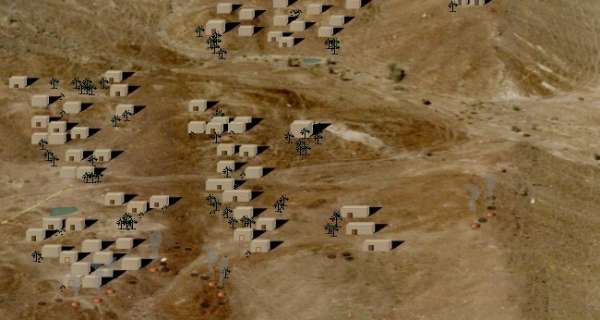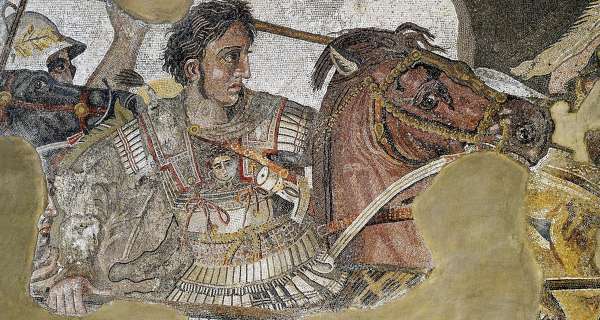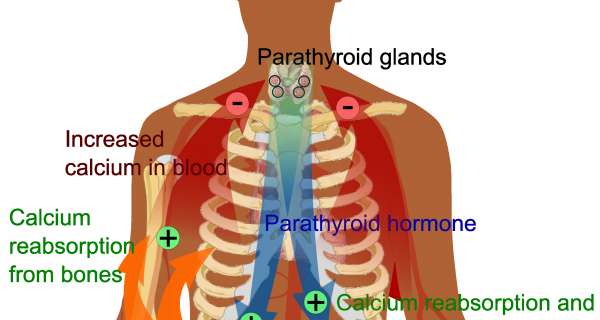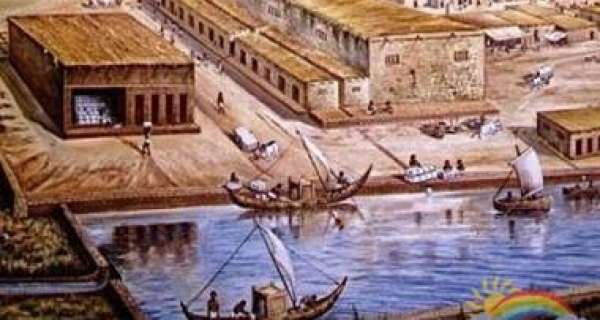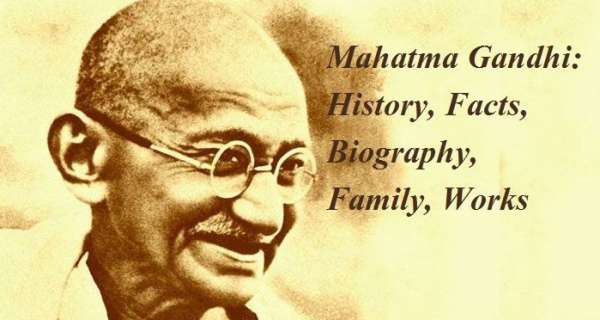The people of Indus Valley had excellent knowledge of metallurgy
Coach driver 2000B.C. Harappa
Archaeologists studying the remains of two men from Mehrgarh, Pakistan, in 2001, made the discovery that the people of the Indus Valley Civilization, from the early Harappan periods, had the knowledge of proto-dentistry. Later, in April 2006, it was declared in the scientific journal Nature that the first evidence of drilling of human teeth in a living person was found in Mehrgarh. Eleven drilled molar crowns from nine adults were found in a Neolithic graveyard in Mehrgarh dating from 5,500 BC – 7,000 BC. According to the authors, their discoveries suggest a tradition of proto-dentistry in the early farming cultures of the region.
Harappan people developed the most precise measurements humanity had at the time
Indus traders weighed their goods on scales, using stone weights. The scale pans here are made of copper.
Archaeologists have found stone cubes which are clearly intended to be weights which increase in a ratio of 5:2:1 with weights of 0.05, 0.1, 0.2, 0.5, 1, 2, 5, 10, 20, 50, 100, 200, and 500 units. The actual weights do not correspond to any of the then existing systems of Egypt or Mesopotamia. So it is safe to conclude that this is a locally invented system.
The markings on an ivory scale found in Lothal in Gujarat shows their smallest division was approximately 1.704 mm, the smallest division ever recorded on a scale of the Bronze Age.
Earliest scale to test the purity of Gold
A touchstone bearing gold streaks was found in Banawali, the purpose of which was probably for testing the purity of gold (such a technique is still used in some parts of India).
The first people to domesticate Cotton
The earliest archaeological evidence for cotton use is from Mehrgarh, in the Kachi Plain of Balochistan, Pakistan, in the sixth millennium BC. People of the Indus and Gaggar-Hakra river valleys were, without a doubt, the first to produce cotton on an industrial scale. Cotton textile was one of the major export items that helped the growth of trade and economy of the civilization.
IVC people invented the world’s first buttons!
In the Indus Valley Civilization, buttons made from seashell were used for ornamental purposes rather than as fasteners. The first instances were found dating around c. 2800–2600 BCE. Some buttons were carved into geometric shapes and had holes pierced into them in order to attach it to clothing with thread.
They made the world’s oldest signboard!
In 1999, at Dholavira, archaeologists have discovered what apparently is the world’s first signboard. This board had stone symbols/letters of over 30 cms in height inlaid in a wooden frame. Since the Indus script has not been deciphered yet, we still don’t know what it meant. But it is believed that it was placed at the façade of the majestic north gate of the city’s citadel.
People were very fond of games particularly dice games
The Harappans also made various toys and games, among them cubical dice (with one to six holes on the faces), which were found in sites like Mohenjo-Daro. Other toys include clay figures of bullock carts, miniature pots, utensils etc., spinning tops, marbles and more. Thus, we can say that not only the children but even the adults were playful in nature.
They were very advanced in Art and Craft
Harappan dancing girl
Harappan art and craft had achieved a level of sophistication beyond its time. This can be seen from their ceramic and terracotta potteries; bronze, copper and other metal artifacts; their skills in bead-making, and other crafts.
This can be understood from the fact that the British archaeologist, Sir John Marshall, who found the bronze Dancing Girl statuette couldn’t believe that it predates Greek sculptures for thousands of years.
Technological achievements of Indus Valley Civilization
